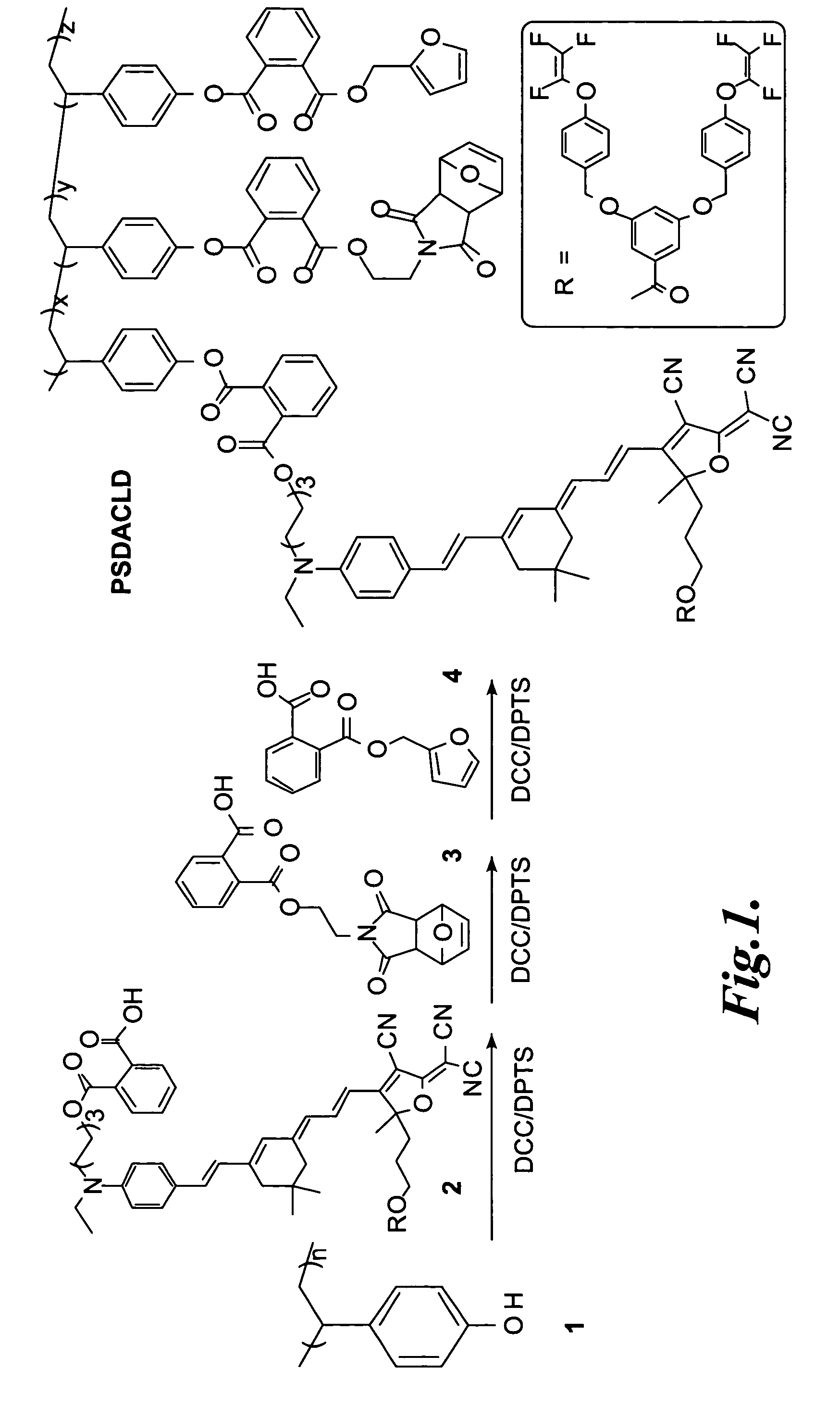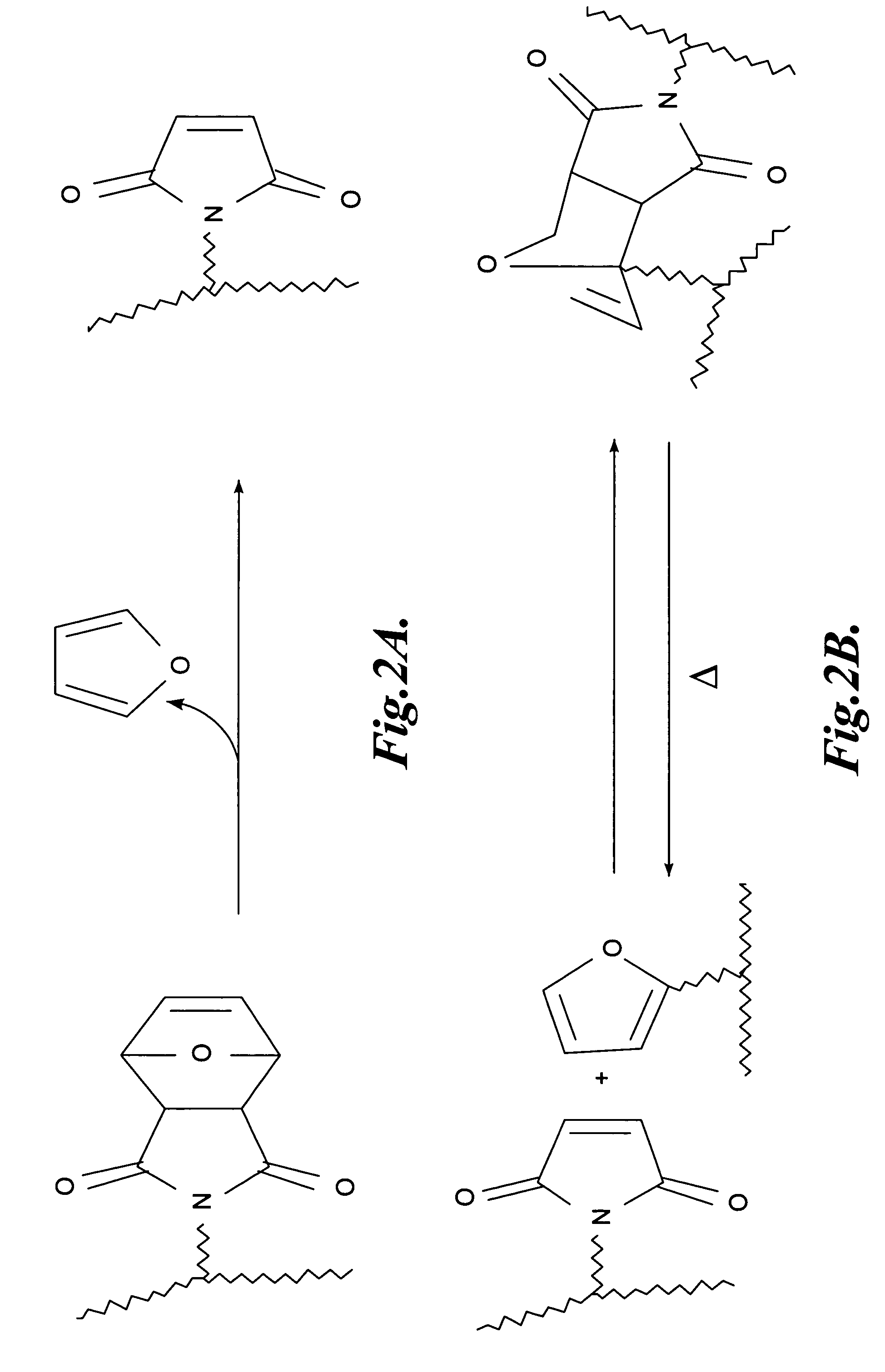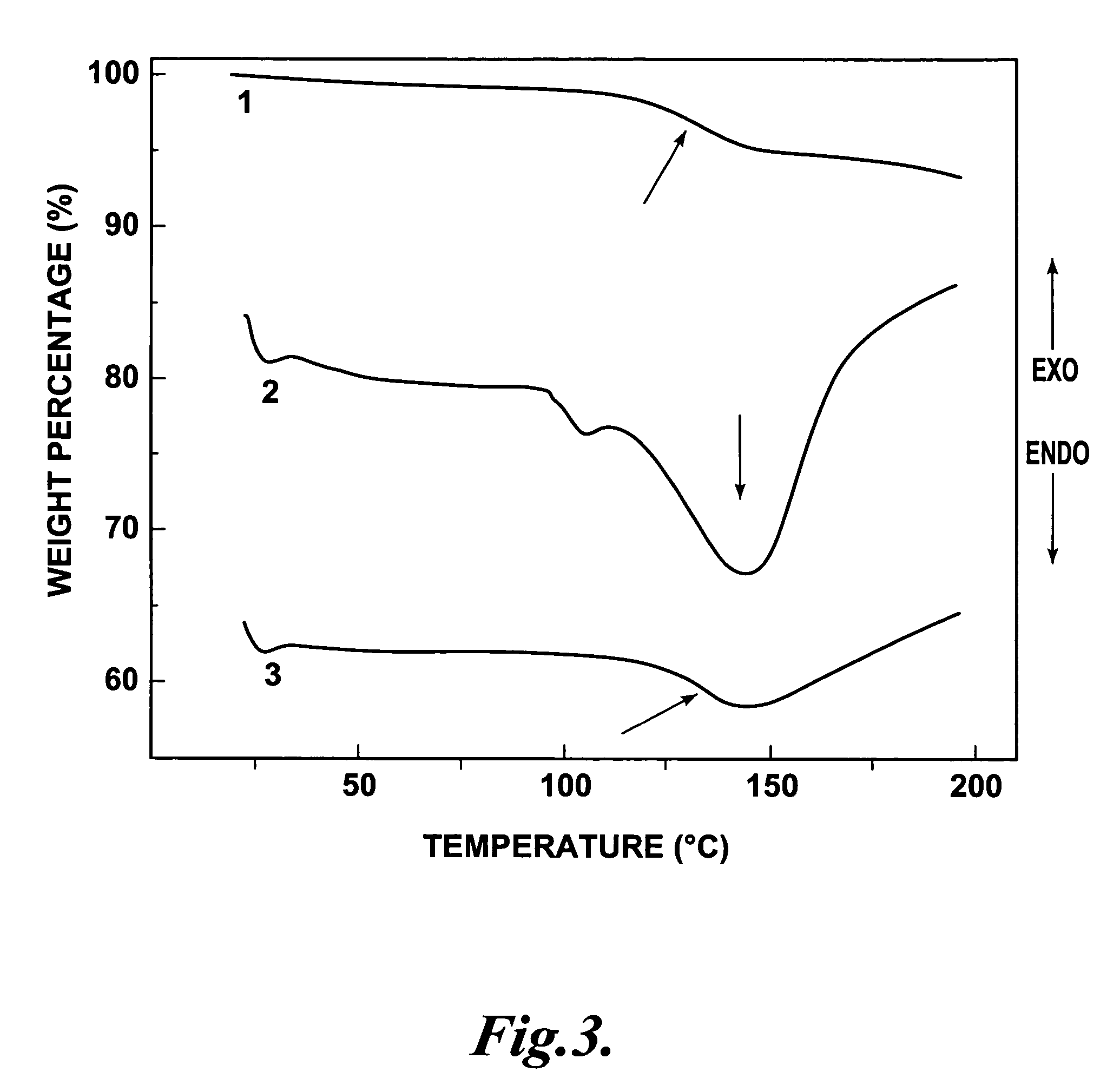Reversible crosslinking method for making an electro-optic polymer
a crosslinking method and electro-optic technology, applied in the field of nonlinear optical polymers, can solve the problems of low poling-induced alignment stability, poor solvent resistance, and inability to integrate all these desirable properties in a single material system
- Summary
- Abstract
- Description
- Claims
- Application Information
AI Technical Summary
Benefits of technology
Problems solved by technology
Method used
Image
Examples
example
Synthesis and Characterization of a Representative Thermo-Reversibly Crosslinkable NLO Polymer: PSDACLD
[0077]General methods. Dichloromethane was distilled over phosphorus pentoxide under nitrogen. Tetrahydrofuran (THF) was distilled from sodium benzophenone ketyl under nitrogen prior to use. 4-(Dimethylamino)-pyridinium 4-toluenesulfonate (DPTS) was prepared according to J. S. Moore, S. I. Stupp, Macromolecules 23:70, 1990. Compounds 2, 3, and 4 were synthesized by following the similar procedures described in Luo, J. D., et al., Advanced Materials 14:1763, 2002, and Yoon, S. S., and W. C. Still, Tetrahedron 51:567, 1995. All the other chemicals were purchased from Aldrich unless otherwise specified.
[0078]PSDACLD Synthesis. The synthesis of PSDACLD is illustrated schematically in FIG. 1.
[0079]To a solution of poly(4-vinylphenol) (1, 0.045 g, 0.374 mmol), compound 2 (0.120 g, 0.094 mmol), and DPTS (0.027 g, 0.092 mmol) in the mixture of 7.5 mL of THF and 3 mL of dichloromethane was ...
PUM
| Property | Measurement | Unit |
|---|---|---|
| Lattice constant | aaaaa | aaaaa |
| Thermoplasticity | aaaaa | aaaaa |
| Crosslinkable | aaaaa | aaaaa |
Abstract
Description
Claims
Application Information
 Login to View More
Login to View More - R&D
- Intellectual Property
- Life Sciences
- Materials
- Tech Scout
- Unparalleled Data Quality
- Higher Quality Content
- 60% Fewer Hallucinations
Browse by: Latest US Patents, China's latest patents, Technical Efficacy Thesaurus, Application Domain, Technology Topic, Popular Technical Reports.
© 2025 PatSnap. All rights reserved.Legal|Privacy policy|Modern Slavery Act Transparency Statement|Sitemap|About US| Contact US: help@patsnap.com



